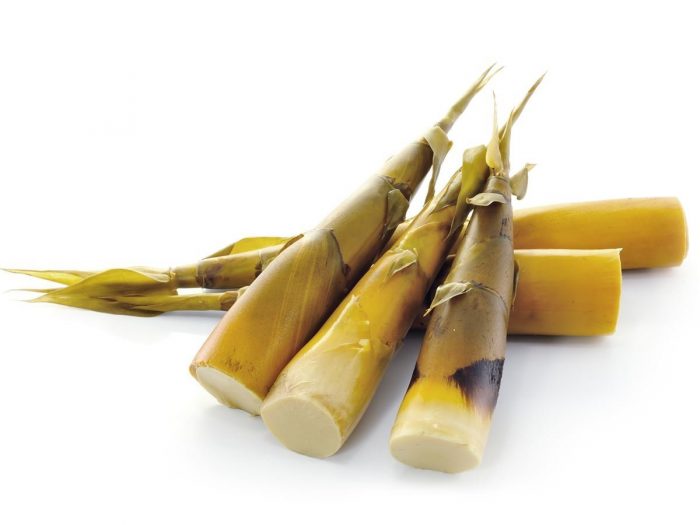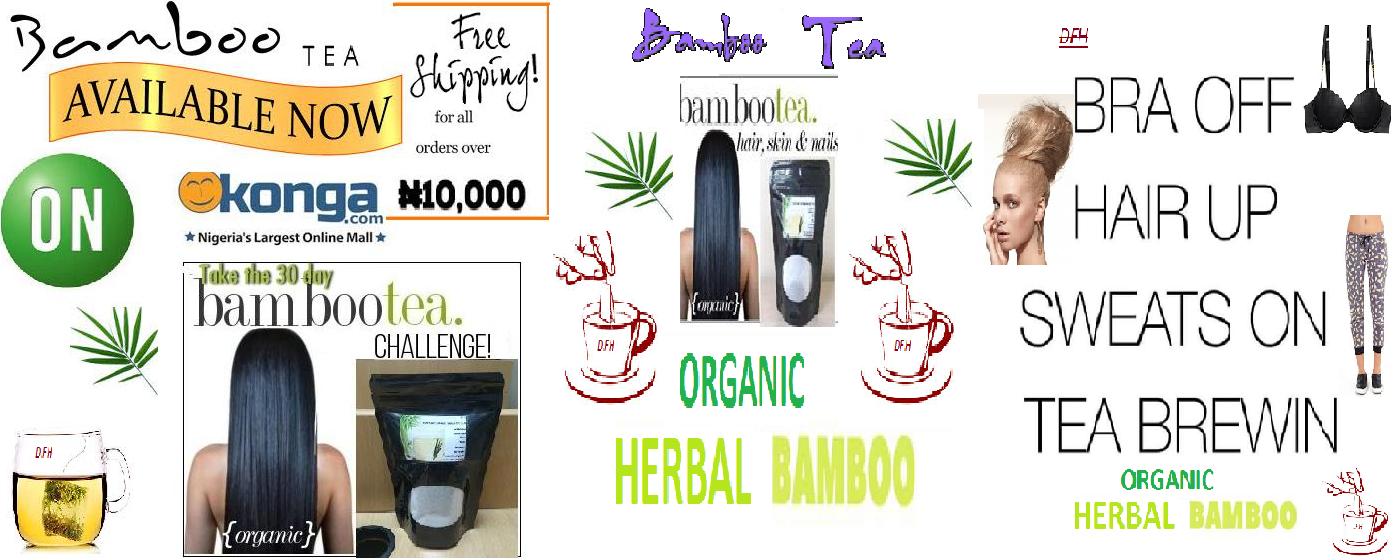The health benefits of bamboo shoots include healthy weight loss, control of bad cholesterol, strengthening of the immune system, possible cancer-fighting properties and anti-inflammatory properties. It is heart friendly, contains protein, a sufficient supply of vitamins and minerals and a negligible amount of fat. It also contains a significant amount of dietary fiber.
What are Bamboo Shoots?
Bamboo shoots are the sprouts which spring out beside the bamboo plant. These sprouts or shoots are edible and they belong to the Bambusoideae subfamily of grass. They are the largest and tallest in the grass family. Bamboo is also known to be one of the fastest growing plants in the world. The fastest growing species of bamboo is Chinese Moso. It reportedly grows up to 100 cm per day.
Some of the bamboo species whose sprouts are harvested include phyllostachys edulis, winter shoots, ‘hairy’ shoots, phyllostachys bambusoides, dendrocalamus latiflorus, bambusa vulgaris, bambusa oldhamii, andbambusa odashimae.
Every part of the bamboo plant is put to use by Asian cultures and various ethnic groups. Bamboo is used for various other purposes ranging from construction, support for buildings, simple housing, bamboo furniture, musical instruments such as flutes, dizi, xiao, shakuhachi, and in paper production. Thus, bamboo is one of the most utilized and versatile plants on the planet.
Apart from these many uses, bamboos shoots are also consumed in many Asian countries such as China, Korea, Japan, Taiwan, Thailand, Philippines, Indonesia, Nepal and India. One can find evidence in old Chinese literature dating back to the Tang dynasty (618 AD- 907 AD), about the benefits of eating bamboo shoots. This was perhaps the first written record about bamboo shoots in human history. Another important scripture dating back to the Ming dynasty (1368 AD to 1644 AD) also mentioned the medicinal and other benefits of bamboo shoots. In Japan, bamboo shoots are considered as the “King of Forest Vegetables”. There are many bamboo species which sprout shoots, but only a handful of them are actually cultivated and consumed.
Bamboo shoots are available in either fresh or canned varieties. Fresh bamboo shoots can last for up to two weeks when they are properly refrigerated and away from sunlight or else the shoots will develop a bitter taste. On the other hand, canned versions can be stored for a long time. It is recommended to cook them as quickly as possible when eating them fresh. However, before cooking fresh bamboo shoots, it is highly recommended to boil them partially or soak them in water overnight, as some species may contain cyanide, which can be eliminated by either of these processes.
Nutritional Value of Bamboo Shoots
According to a study conducted by Nirmala Chongtham, Madho Singh Bhisht and Sheena Haorongbam from Punjab University in Chandigarh, India, bamboo shoots are rich in various nutrients.
 Low Caloric Content: A 100 gram serving of bamboo shoots contains only 20 calories. Also, the carbohydrates found in bamboo shoots do not amount to more than 3-4 grams per 100 gram serving.
Low Caloric Content: A 100 gram serving of bamboo shoots contains only 20 calories. Also, the carbohydrates found in bamboo shoots do not amount to more than 3-4 grams per 100 gram serving.
Low Sugar Content: The amount of sugar found in bamboo shoots is about 2.5 grams per 100 gram serving. This is less than the amount of sugar found in many fruits and vegetables.
Negligible Amount of Fat: A serving of 100 grams of bamboo shoots contains less than 0.49 grams of fat. This fat consists of both saturated and unsaturated fats. Unsaturated fats are needed by the body and they can control the spread of bad LDL cholesterol throughout the body.
Source of Protein: A 100 gram serving of bamboo shoots would have about 2 to 2.5 grams of protein. The proteins found in bamboo consists of seventeen essential amino acids and two semi-essential amino acids.
Vitamins and Minerals in Bamboo Shoots: Bamboo shoots contain vitamins such as vitamin A, vitamin B6, vitamin E, thiamin, riboflavin, niacin, folate and pantothenic acid. Minerals found in bamboo shoots include calcium, magnesium, phosphorous, potassium, sodium, zinc, copper, manganese, selenium and iron.
High in Dietary Fiber: Bamboo shoots are high in dietary fiber. The amount of dietary fiber contained in bamboo shoots make up 6-8 grams out of a 100 gram serving.
Appetizing effects: Bamboo shoots contain high cellulosic material which stimulates the appetite. The taste and texture of the bamboo shoots also make them a good appetizer.
Health Benefits of Bamboo Shoots
Bamboo shoots are an exotic food that is consumed in many countries in Asia and now it is slowly growing in demand from western countries. Bamboo shoots are known for their various health benefits, including those explained in greater detail below.
Helps in Losing Weight: Bamboo shoots are weight loss-friendly. When we look at the amount of calories, carbohydrates and sugars contained in bamboo shoots, it is shocking to find that their presence is almost negligible. This makes it an ideal food for people who want to lose weight, but also who want their stomachs to be full.
Heart Health: According to research studies, phytosterols and phytonutrients found in bamboo shoots are ideal for dissolving harmful LDL cholesterol in the body. This eases cholesterol out of arteries for the smooth supply and movement of blood throughout the body.
Controls Cholesterol: Consumption of bamboo shoots is also helpful in decreasing LDL levels of cholesterol, with stable glucose levels. This is due to the fact that bamboo shoots contain negligible amounts of fat and very low calories. Research conducted by Park and Jhon at Washington State University showed that the consumption of bamboo shoots had favorable effects on cholesterol, lipids and bowel function.
Fights Cancer: Research studies conducted on bamboo shoots have indicated that leaves of bamboo shoots consist of phytosterols such as flavone, amylase and chlorophyll. Out of these, chlorophyll showed properties of controlling mutations and cancer.
Strengthens the Immune System: The vitamins and minerals in bamboo shoots are ideal for improving the body’s immune system. The vitamins, minerals, and antioxidants present in bamboo shoots are essential for strengthening the body from the inside out.
High Supply of Dietary Fiber: The amount of dietary fiber in bamboo shoots is high. Consuming sufficient amounts of dietary fiber is essential for easy digestion and healthy bowel movements. Including bamboo shoots in your meals can be a very good idea for losing weight as well. With lack of any physical activity during the night time, taking food with less calories and high fiber helps lose weight easily, even while you sleep!
Anti-Inflammatory Properties: According to research conducted by Muniappan and Sundararaj, bamboo shoots possess anti-inflammatory and analgesic (pain-killing) properties. It helps in the healing of ulcers as well. Juice from bamboo shoots can also be used as a medicine for external wounds and ulcers.
 Respiratory Disorders:Bamboo shoots have been known to be effective against respiratory disorders. A decoction of the shoots can be prepared by boiling the shoots twice. The first boil should be for 5 minutes followed by a second boil for about 10 minutes. The decoction can be taken along with honey for the best effect.
Respiratory Disorders:Bamboo shoots have been known to be effective against respiratory disorders. A decoction of the shoots can be prepared by boiling the shoots twice. The first boil should be for 5 minutes followed by a second boil for about 10 minutes. The decoction can be taken along with honey for the best effect.
Possible Cure for Poisoning: In Ayurvedic medicine, the ancient Indian science of medicine and lifestyle, it is believed that bamboo extracts contain anti-venomous properties. They are useful in cases of both snake and scorpion bites.
Uterotonic Properties:Traditional Chinese medicine believes that bamboo shoots can cause uterine contractions. It is used as a medicinal supplement during the last month of pregnancy when the delivery date is still pending. According to the research papersubmitted by Gruber and O’Brien at the University of Vienna, bamboo is one of the many plants which have been listed among uterotonic plants.
Stomach Disorders: Bamboo shoots are useful in treating stomach disorders. Apart from bamboo shoots, bamboo leaves are also suggested as a remedy for intestinal worms and stomach disorders as well.
Wound Cleaning: Bamboo shoots are also used for cleaning wounds and sores.
Lowers Blood Pressure: Bamboo shoots contain high amounts of potassium. Potassium is highly beneficial as an electrolyte and is also very good for lowering and maintaining blood pressure.
With all of these benefits from bamboo shoots, they are highly recommended for a healthy lifestyle.
A Few Serving Ideas for Bamboo Shoots
Bamboo shoots can be boiled and then used for making various dishes. Boiled shoots can be served with butter and soya sauce as a vegetable accompaniment.
Bamboo shoots can be added to soups, stews, salads and gravies.
Pickles made from bamboo shoots are available and can be consumed as a delicious snack!


